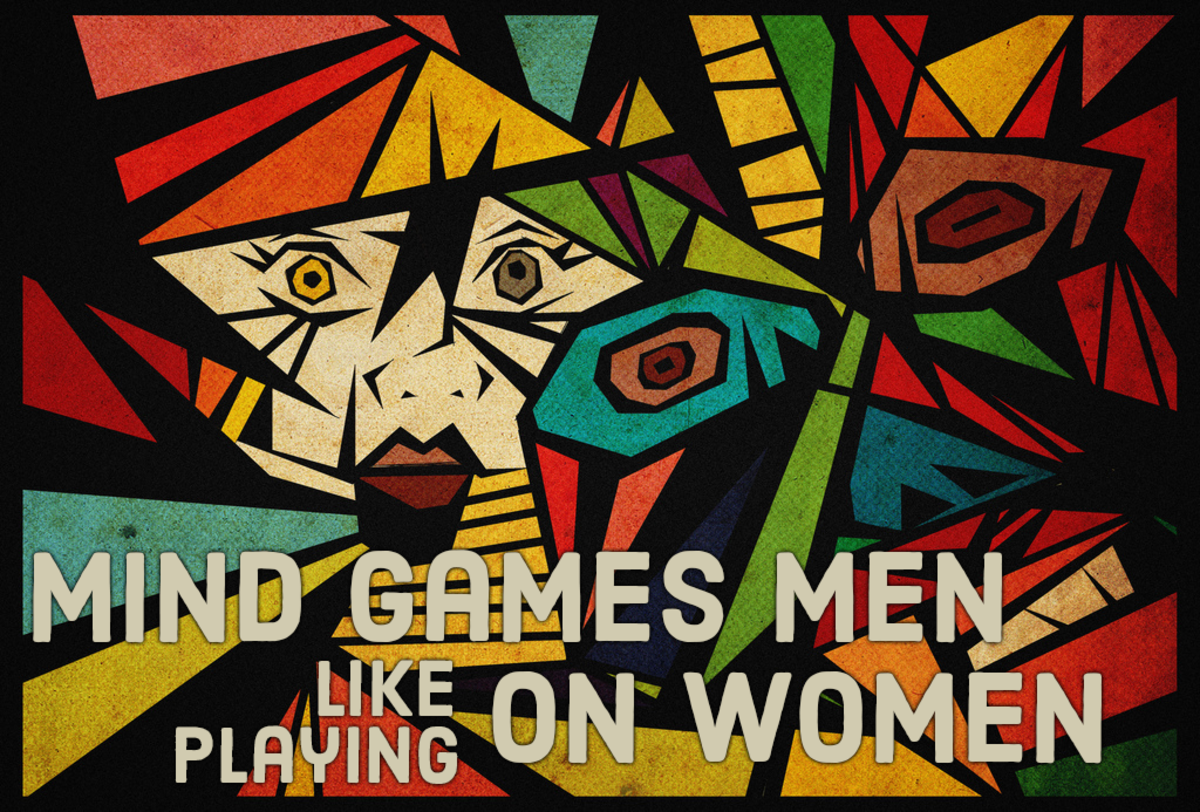How Far Have We Come in Feminism Today? Are We Really Close to Equality?
And the Waves of Feminism Evolved Over Time
Most definitions of feminism state its history as evolving in three waves over time since through the 19th century to the present. So, what were the original ideologies and goals set by the ladies organizing the first conference for women in the 19th century? In 1840 Elizabeth Cady Stanton and Lucretia Mott had attended an international conference for abolition in England with their husbands and noticed that no women were asked to speak and none were even allowed to sit in the front section close to the podium. They considered that quite offensive and discussed the matter later as they were walking the streets of London together and came up with the idea that a conference on women’s rights someday would be a good idea. As of this time women were already concerned with and working toward their active roles in the issues of religion and abolition, and it appears that it took women and innovative as Stanton and Mott to step up the mark in America and around the world, and soon enough to introduce the suffrage movement. On April 7, 1848, just a few months before the Seneca Falls Conference, the New York State Assembly passed the Married Woman’s Property Act, giving married women full rights over all of their property owned prior to marriage and all that was earned during marriage, as well as denying debtors the right to seize a wife’s property in order to pay the husband’s debts. This was a huge initial step in the way of women’s rights in the state of New York, and Pennsylvania was soon to follow.

It's Hard To Say When The Feminist Movement Truly Began
There are so many questions we can ask today of both ourselves as women and of the public as to how far we have come in our progress in liberation within the world where we have so long been considered a secondary or submissive partner or class among the males who commonly rule our ever-evolving world. For hundreds, even thousands of years now many women have been bringing their voice and words to the forefront to speak their minds of the independence and equality to which they are not only allowed but which they much deserve as an equal half of the human race. Now, feminism may not be recognized historically until “A Vindication of the Rights of Women” by Mary Wollstonecraft in 1792 or the Seneca Falls Conference in July 1848 organized by Elizabeth Cady Stanton and Lucretia Mott. These two major points in history and these three women voiced their opinions openly toward women’s rights in a time when it was clearly not an open topic for discussion in the public forum. These women were definitely originators and leaders for other women who were thinking the same things during a time when they were held back from equality in their homes and marriages, from getting higher education, from speaking in public, from voting in any elections, or from any basic decision making rights or higher employment at all.
So The First Women's Conference Was a Boost!
Lucretia Mott and her family were a part of the Quaker religion, in Western New York near Seneca Falls, people who believed more highly in the equality of marriage between a man and woman. On July 9, 1848, Stanton was having tea with Mott and a group of women when she began to vent some of her current frustrations of life to the others, bringing up again the possibility of bringing together a conference of women, or a large group of people in general to bring the issue of women’s rights out into the open. Since the rest of the women, Mott and her relatives, were all Quakers, they were among people who were slightly more open to listening to these issues and placing them out into the public. Thus, the plans for this first two day women’s conference to be held just ten days later began immediately, for only women on the first day and both women and men the following day. Elizabeth Cady Stanton drafted the declarations and resolutions to be presented at the conference at her own desk that night, asking for equality in the family, education, employment, religion and morals. She pulled copy from the Declaration of Independence stating that we are not just a country of men, but of men and women, and that the statements made of 1776 are made for both men and women of the United States. These women were able to publish their announcement immediately in several newspapers including Frederick Douglass’s North Star, which was only one of their links to the abolitionist movement. So, after over 160 years, how close have we come to reaching these initial ideologies and goals, resolutions set by these innovative women so ahead of their time? How close are we really to true equality now in 2014?

It Wasn't Just About Gaining The Vote...
During that first wave of feminism and the women’s movement, American women were able to gain critical advancements in their liberation and equal rights within our world, while also providing a standard of hope for women around the world still living under oppression and even mutilation. After 70 years of activation and movement women were finally granted the vote across the board equally in 1928 in the United States, moving the women’s rights movement and feminism onto a whole new playing field. So, it’s hard to say exactly when feminism moved into its second wave exactly, but there were some changes in the ideologies and goals of the women looking for changes and forward movement going into the 1940’s and 50’s. As many men left the factories and industry and went overseas for the second world war and Korea, women entered the workforce in much greater numbers and were forced to take a greater stand for things like equal pay for equal work, a place within the labor unions that would protect not only their pay but their benefits and long-term positions as well as issues like legal protection for minimum wage nation-wide among other things. While so many men were gone during a great amount of time of two decades many women took on both roles of their homes, as both bread winner and caregiver, something they had rarely been required to do before, at least not in middle class white America.
And Into The Second Wave Women Gained More Strength
With this sense of both in-home and external independence instilled in many American women there was a much more activist instinct to be taken into the 1960’s, I guess many could say militant as the women of the feminist movement marched alongside those of other social, cultural and political movements that poured through the streets for decades. Now, the second wave of feminism was definitely much more radical and increasingly critical of traditions they felt held them down in every stage of their lives. This second feminist wave is often defined by lesbianism, radicalism, eco-feminism, raising the fight for equal pay for equal work along with equality in the workplace, reproductive rights, fights for legal protection against sexual and domestic violence as well as violence against women around the world. This wave became an outright social and cultural battle that was taken very public among the media during the time of the Vietnam War and Civil Rights battles and many very political issues around the nation. Women rose to their own feet and created their own battle with a “Sisterhood” prepared to fight against men if need be for the protection of themselves and the earning of their much needed rights within a country from which they felt long-rejected. Slightly different to the first wave of the women’s movement when those people, a first conference of both men and women who were willing to stand side-by-side with abolitionists, this second wave of feminists were more in competition with Civil Rights activists for the attention of the media for their issues and rights to make it to the forefront of national policy. These feminists felt a need to separate themselves from everyone and make sure that their own voice and movement and activity was simply theirs to be heard alone in the wind with the issues of women’s rights to be only theirs.
So The Definition of 'Feminist' Becomes More Powerful As Time Passes
With those hardcore, postmodern actions and definitions of the word and movement “feminism” through the 80’s there was definitely left behind a sort of backlash for the women of today who still have plenty of issues to conquer for ourselves. And I say “ourselves” because as an independent woman I do consider myself a feminist within today’s third wave and our new culture and technology as it has evolved from the 1990’s into the present. Women today are still left with many issues and concerns in the world to face including equalities in the workplace while we still on average only receive 77% of the pay for the same work of a male employee. Although it is a wonderful fact that we have come so far today that many women in this world have moved into leadership positions in both corporate and political fields, a majority of industries and companies are still held back by patriarchal standards and biases and leave so many women looking up underneath the glass ceiling.
Although Young Women Are Scared Today They Have The Right To Stand Up
I was recently reading an article titled “Who Is a Feminist Now?” where the interviewers and author seemed to be hounding several actresses and female musicians about both their positions and identification with feminism today, which is currently a very overpowering topic given the backlash left behind by many militant women of the 60’s and 70’s who were very vocal about their self-identification and separation from the patriarchal leaders of their day. Many of the responses from those young women involved the denial of feminism due to their love for men and the need for balance within the world containing both sexes and no need for women to take everything over alone. It appears that the backlash of the second wave of feminism still overshadows the definition of the word rather than opening up the entire population to the need for equality, both women and men together. What they do not think about is the actual theory of the third wave of the feminist movement and its very different nature from the women they are defining, and what are called the “grrls” today who are much more feminine in a global and multicultural world, using technology to their advantage in a much more open and understanding world where we are able to understand everyone’s differences in identity, including things like ethnicity, sexuality and class, no matter whether they are men, women or transgender within groups of people. These women within the third wave work to be not only open-minded but to break boundaries, even though they are still allowed to where their high heels and lipstick if they feel the need to do so.
Into The Third Wave There Is Progression
This third wave of feminism and the women’s movement is a sort of vague existence within today’s technology, with the definition and ideology of the word still living under the overwhelming shadow left behind from the militant, activist women of the 60’s and 70’s. It is understandable that those women had other groups to compete with in order to get their message out to the public and the media, but the impression left behind has been very negative in some respects to the women of future decades. Therefore many women today, especially famous personalities in the light of the media including actresses and musicians, do not want to identify themselves as feminists because of the image left behind by the second wave considering the connotations of lesbianism and female power, all including a certain level of hatred or separation from men indicated with the second wave of feminism.





